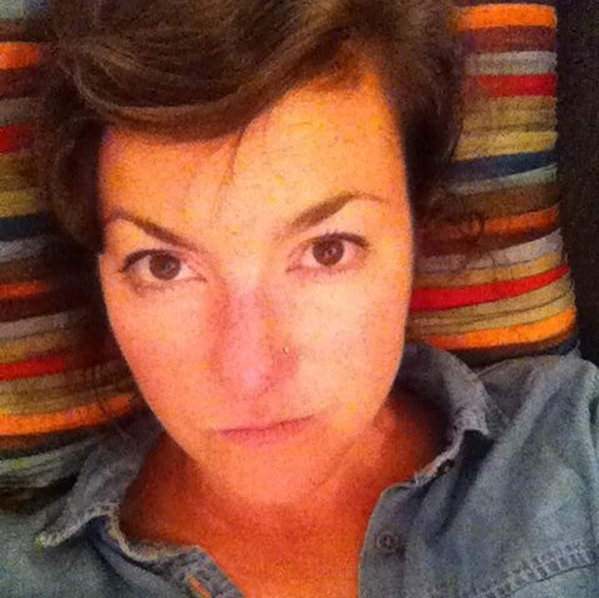Why does the word “feminism” inspire so much debate? If worldwide reactions to Emma Watson’s recent UN speech are any indication, we still have a long way to go before inequity between men and women is a thing of the past. Luckily, talented, brilliant people like Erin Wunker are drawing attention to human rights issues right here in Canada. As the chair of the Board of Canadian Women in the Literary Arts, Wunker works with a team of dedicated individuals to call out inequity where it still exists in academic institutions, Canadian media, and communities at large. One of the ways the CWILA does this, particularly with regards to book reviews, is with the organization’s annual “Count.” It works similarly to GLAAD’s famous “Where We Are on TV” Report, which has affected serious change in American representations of the LGBTQ community on television over the years. Intrigued by what’s happening right here in your own country? Interested in how you can help? We caught up with Wunker to find out more…
Tell us a bit about yourself. What should people know?
I was born in Canada, grew up in the Southern United States, and have lived all over Canada. I moved to Atlantic Canada in 2009 and have completely fallen in love with it. I live in Halifax, which is one of the loveliest cities in the country. In addition to teaching and writing I do a lot of yoga (I know) and walk my lovely dog all over the city. My partner and I try to escape to the ocean as often as possible.
ADVERTISEMENT |
I’m a university professor by training. My own research is on ways that art and poetry by women and Indigenous peoples in Canada productively comment on neoliberalism. I am also the chair of the Board of a national non-profit organization called Canadian Women in the Literary Arts (say ‘kwi-lah’). CWILA’s mandate is to promote and discuss representational justice in Canada’s literary culture. Basically, we are working to call out inequity and working collaboratively with editors, teachers, communities, and institutions to come up with creative ways of celebrating Canada’s diversity of cultural practitioners…without sweeping racism, sexism, and homophobia under the rug.
Many people still struggle with understanding what feminism is and what it means to be a feminist. How would you describe what feminism is and what being a feminist means to you?
I remember being in a class many years ago and saying to the teacher “I don’t think we need feminism anymore, but I am grateful for it because it gained women so much ground.” Wow, was I ever naïve. The radical feminists of the 1960s would have called my performance ‘false consciousness’: I wasn’t aware of the ways in which patriarchal structure affected me in small and big ways every day. And let’s be clear — patriarchal structure is a system that acts on individuals, it isn’t a vilification of one gender identity and the celebration of another. Put frankly, for me feminism is a language through which to articulate inequity that happens because of one’s gender. Like the language of anti-racist activism, feminism names an unequal system and works to teach people about that system as well as change it for the better.
For me, being a feminist means thinking and writing and talking about the world we live in through my own embodied experience. Being a feminist means building healthy and empowered communities. Being a feminist means listening. Being a feminist means diagnosing a sick social system rather than blaming a victim. And being a feminist means taking risks.
You’re the co-founder and editor of the feminist academic blog Hook & Eye. What are a few of the biggest challenges facing women who work in the Canadian university system and why?
Hook & Eye started in 2009 as a place to talk about working in the Canadian university system through a gendered lens. There were lots of American websites and blogs that did this, but nothing existed in the Canadian context (nor, to my knowledge, is there anything like what we do now). But a lot has changed. When we started, Hook & Eye was one tenured professor, one tenure-track professor, and me. I’d finished my PhD and was doing contract work. Now, we have a regular roster of seven writers and only one of us is tenured. The crisis in higher education is actually one of the most pressing issues for anyone — women, men, or transgendered people — working in the university system. Trying to pinpoint the ways in which women (who are still paid less dollar for dollar than men in most universities in Canada) experience unique challenges in the university is the main work we do. We write about things as various as the devastating job market for qualified and dynamic PhD holders, the challenges of work-life balance, we exchange tips on conference presentations, how and where to breastfeed on campus, what to wear for different kinds of presentations, and how to build community. The challenge that undergirds all of this is to shift the popular misconception that people teaching in universities and colleges make a lot of money and have a lot of free time. That is true for a tiny percentage of professors, but convincing people who don’t work in this context that there is a job crisis in the field of higher education is a challenge. One step at a time!
ADVERTISEMENT |
Canadian Women in Literary Arts is releasing the 3rd annual Count of books reviews on September 25. For those who don’t already know, what is the Count, how did the idea to start it arise, and what do you hope it accomplishes over time?
CWILA and the Count were founded by poet and teacher Gillian Jerome after the V125 Poetry conference in Vancouver. The sense was this: it seemed like men and women were writing and publishing literature in equal amounts, but that men’s writing was being reviewed and discussed more than women’s. The Count emerged as a necessity: if you’re going to make a claim about inequity you’d better have the statistics to back up that claim. CWILA formed as a way to proactively and positively do something about the fact that, yes, men’s writing is more regularly reviewed that women’s writing in Canada.
We are a new organization — just three years old — and we have ambitious short and long term goals. In addition to continuing to nuance and expand our count (in 2011 we counted for male/female, in 2012 we addressed Canadian content as well as how to adequately and ethically count and represent trans and genderqueer writers, 2013 is our first foray into French language publications), we fund an annual Critic in Residence position. The aim of the residency is to foster criticism that promotes public awareness of women’s literary and critical presence in Canadian letters. Specifically, the critic-in-residence works on critical essays and/or book reviews and submits them to one or more Canadian review venues (print and web). This work is also archived by CWILA and becomes available through its website following publication elsewhere, copyright permitting. The critic-in-residence is encouraged to support a climate of critical responsiveness in Canadian letters through a collaborative or community-based project of her choice. In addition, the Critic in Residence will comment on the results of the annual Count in a public forum. The residency is virtual, so the writer is free to work from home. The Critic in Residence will finish the term by submitting a dossier summarizing the work done while in residence. The deadline for submission of the essay or reviews to CWILA is December 31st of the year of the residency. At this time, the writer also provides documentation that the pieces have been submitted to other publications.
The current CIR is the fabulous Shannon Webb-Campbell who is a writer living and working in Halifax. You can read about the work she’s been doing here.
What have the results over the past three years shown you about gender equity in Canadian literary culture?
Three years isn’t enough time to establish what we might refer to as a trend, but we have certainly seen signs of what we’re coming to call “the CWILA effect.” Here’s what I mean: publications that have been counted the previous year have, on the whole, tended to show improvement in terms of gender equity. For example, in 2011 only 33% of reviews in National Post were on books written by women. In 2012 their percentage was up to 45%. This was due, in great part, to National Post book reviews editor Mark Medley (who is now with The Globe and Mail) taking our count seriously and entering into conversation with us. Here is what he said in an interview with Savanna Scott Leslie:
“I’d be lying if I said that CWILA, and last year’s count, hasn’t affected the National Post’s Books Section. I was on my honeymoon when the numbers came out, and I remember pacing around our hotel room, looking at my iPhone in disgust, and disbelief, at the results and the subsequent debate on Facebook and Twitter. It felt like a personal attack. Which is ridiculous, of course. I knew my numbers were bad, but dragging them into the light, kicking and screaming, was exactly what needed to happen. No longer could I pretend I didn’t know what the numbers were, even though I always had a sneaking suspicion they were out of whack. And that’s not to dismiss my section pre-CWILA. I still think it was far and away the best books section in Canada. It just could have — should have — been even better. (Mark Medley, “An Interview with CWILA.”)
ADVERTISEMENT |
CWILA’s numbers pointed to one specific place Medley could focus on while continuing on his own mandate to make the Post’s reviews section strong. That is a positive, tangible effect.
On the other hand, as our data from this count of 2013 reviews shows, if a publication hasn’t been counted before — hasn’t been dragged “into the light, kicking and screaming,” then the gender divisions are much more stark. Here’s the positive spin: these statistics are showing that there is a real inequity when it comes to representational justice in Canadian literary culture, but there are some really straightforward things we can do to address the imbalance. The first is simply starting a conversation with editors, writers, publishers, and readers; the second step is to listen to what people say.
How can people, academics and non-academics, who are enlightened by the Count help the CWILA affect change?
CWILA is an organization with more that 500 members and we are growing all the time. Our membership is diverse — we are many genders, many professions, and many racial identities. What brings CWILA members together is a desire to affect positive and generative change. As a young not-for-profit organization we depend on the support of our members and volunteers. Anyone can become a member, and anyone can volunteer with us. One of the specific ways interested people can help is by joining our Count team and volunteering to read and tally the book reviews in one major Canadian news publication each month. These volunteer efforts saves the Count manager and the board hours of labour, and since we all have to make our living doing paying work that can sometimes be an overwhelming time commitment.
ADVERTISEMENT |
Who are some of the most interesting Canadian women writers of today and why?
This is such a difficult question because there are so many! How about I list the books on my desk right now?
Theory, A Sunday. This is an English translation by the amazing NYC-based *belladonna collective of the 1988 publication La Théorie, un dimanche, which was a ground-breaking collection of writing by Québec feminists Nicole Brossard, Louky Bersianik, France Théoret, Louise Cotnoir, and Louise Dupré. These women spent one Sunday a month for five years getting together to talk about critical theory, philosophy, language, feminism, and writing. Reading it is like being invited to sit in on a brilliant conversation in the coolest, friendliest, smartest kitchen in Montréal.
Rebuild. Sachiko Murakami is a poet who lives and writes in Toronto. Her first collection of poetry, The Invisibility Exhibit, is a careful and fierce invective to see and think about Vancouver’s Missing Women. This is her second collection of poetry. In it she takes on themes of gentrification, impossible debt, intergenerational memory, and contemporary racism in Canada. She has an incredible digital version of the book called Project Rebuild.
ADVERTISEMENT |
M x T. Sina Queyras is a poet, writer, and blogger who started the indispensable art and culture blog Lemon Hound. This collection of poetry imagines grief as a math equation: memory x time. It is stunning and raw and impossible to put down. It also has a hot pink and silver cover, which does an incredible job of undermining our contemporary framing of grief.
Cereus Blooms at Night. Shani Mootoo’s most recent novel, Moving Forward Sideways Like a Crab, has just been put on the Giller list. This is an earlier novel set on the fictional island of Lantanamacara where botany, murder, gender fluidity, and cooking weave together a poignant story of family, love, and forgiveness. I love teaching this one to my students; it never fails to broaden their imaginations around what love can look like.
Monkey Beach. Eden Robinson is one of my favourite writers bar none. This is her first novel set in Kitamat, BC. The protagonist is a young Haisla woman named Lisa Marie. This novel does more than simply offer settler Canadians a fictionalized look at growing up Haisla in the twenty-first century. It also weaves together settler and indigenous ways of knowing in the voice of a girl you wish was your best friend (or at least would never be mad at you, because she is such a badass).
ADVERTISEMENT |
What’s on your “to-read” list?
El Jones, Live From the Afrikan Resistance.
Ivan E. Coyote & Rae Spoon, Gender Failure.
Thomas King, The Back of the Turtle.
Shalan Joudry, Generations Re-Merging.
Shani Mootoo, Moving Forward Sideways Like a Crab.
Let’s get social for a moment. How do we stay up-to-date with you?
You can find CWILA at www.cwila.com.
You can find Hook & Eye: Fast Feminism, Slow Academe at www.hookandeye.ca.
You can find me on Twitter.






